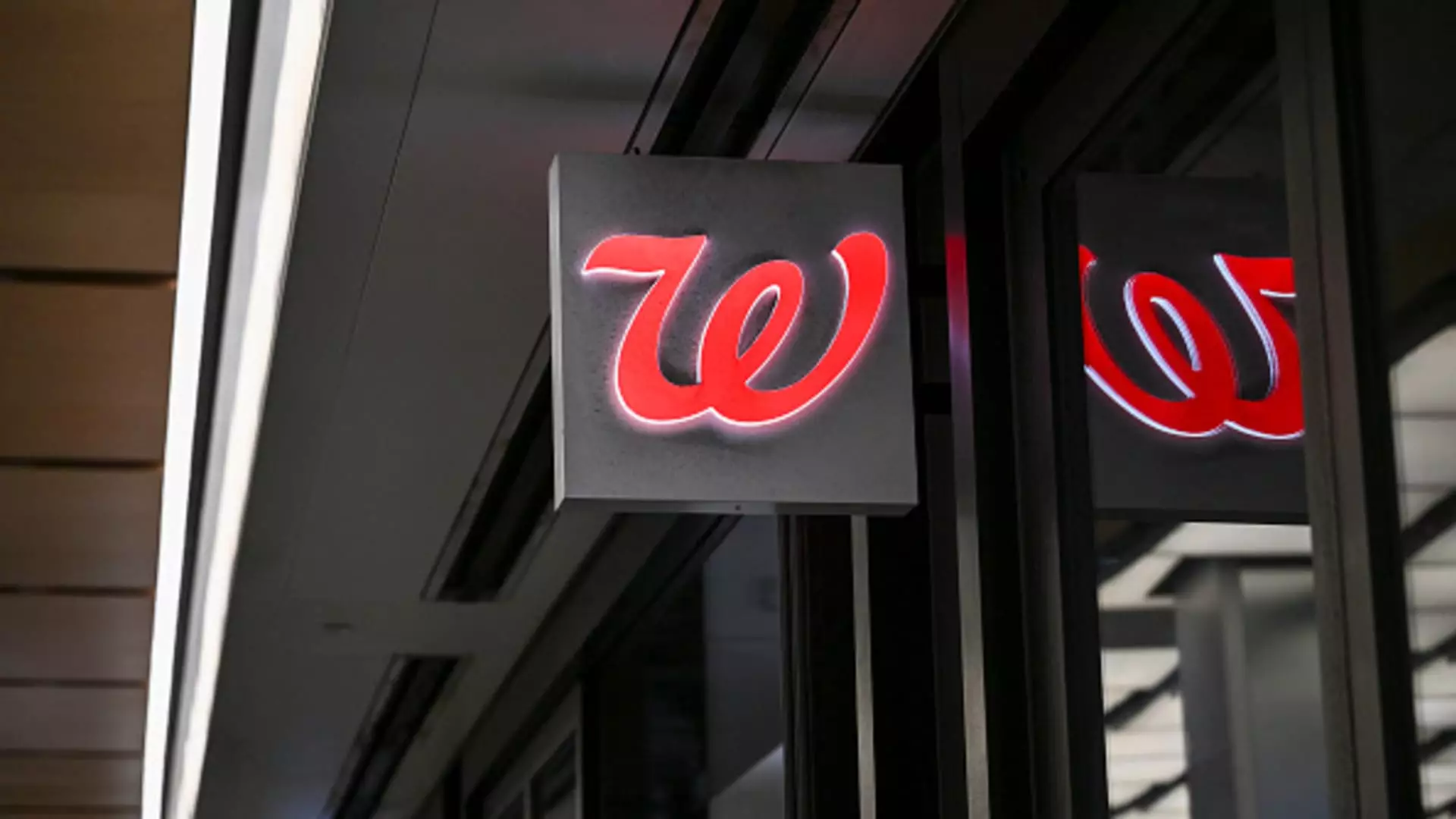Walgreens, a stalwart in the pharmacy retail industry for nearly a century, is on the verge of a seismic change. The company recently announced its fiscal second-quarter results, showcasing earnings and revenues that exceeded expectations. However, beneath this surface of seemingly positive metrics lies a more complex and daunting reality. These results come amid an impending $10 billion deal to take the company private, backed by Sycamore Partners—a move that could signify the beginning of an entirely new chapter for Walgreens, one marked by both opportunity and deep uncertainty.
The decision to withdraw its fiscal 2025 guidance signals Walgreens’ intention to recalibrate its strategic focus further. This strategic pivot reveals not only the challenges ahead but also highlights the urgent need for innovation and restructuring in a rapidly evolving market. As the company prepares for this transition, the implications of its current operations and past missteps must be carefully scrutinized.
Financial Figures Tell a Story of Mixed Fortunes
On the surface, Walgreens reported a revenue increase of 4.1% year-over-year, reaching $38.59 billion, and adjusted earnings per share of 63 cents, surpassing analyst expectations. Yet, juxtaposed against these promising figures is a stark reality—a staggering net loss of $2.85 billion for the quarter, demonstrating the shadows that loom behind those earnings. While shareholders may appreciate the cash flow from investments such as Cencora and BrightSpring, these brief lights in a dark tunnel do not obscure the significant legal challenges and competition that plague the company.
The pharmaceutical reimbursement landscape remains bleak and unyielding. In a time when consumers are shifting their purchasing behaviors, craving convenience and lower costs, Walgreens finds itself in a precarious position. As it grapples with these realities, the questions arise: will the strategic cuts—including store closures and cost management—be sufficient? And more importantly, is this really the way forward for a company that once enjoyed unparalleled dominance in the industry?
The Weight of Legal Settlements and Corporate Struggles
Walgreens’ arduous journey through multiple legal setbacks cannot be understated. The company’s operations in the second quarter were undermined by nearly $1 billion of legal expenses related to opioid settlements and a contentious contract dispute with Everly Health Solutions. These costs, representing more than a quarter of its quarter operating cash flow, reveal the dire consequences of mismanagement and highlight the cost of navigating the legal landscape that has deeply impacted its operations.
As consumers continue to demand transparency and accountability, Walgreens must grapple with its critical missteps. These ongoing legal challenges not only drain resources but also tarnish the company’s reputation—a heavy burden for a business in need of revival.
Moreover, as Walgreens increases its focus on healthcare services, the question lingers: can the company navigate this competitive arena, particularly against established players such as CVS and the ever-expanding grip of Amazon? Offering primary care services through ventures like VillageMD potentially positions Walgreens as a health service provider, but market dynamics require more than mere aspiration; they demand strategic ingenuity.
A Chilling Future: Navigating Competition and Consumer Preferences
The retail landscape continues to transform at an extraordinary pace. Consumers are becoming increasingly selective, favoring convenience and digital how-to’s over traditional retail pharmacy models. For Walgreens, the implications of this shift are stark. As they shut down locations and tighten budgets, they risk losing the very customers they desperately need to retain.
In addition, with the rising influence of competitors like CVS and Amazon, who cultivate advanced technological solutions to enhance the customer experience, Walgreens faces a race against time. As they refine their focus and assess the changing pharmacy and retail landscape, the company’s leadership must embrace innovative ideas while remaining tethered to their core values.
While Walgreens may have managed to navigate a tumultuous past by revealing glimmers of financial resilience, the upcoming transition to private ownership offers a double-edged sword. It poses questions about corporate responsibility, community ties, and the broader implications of serving healthcare needs amidst rampant capitalism. Through strategic foresight and robust dedication to genuine consumer-centered services, Walgreens might redefine itself anew—but only time will tell if this retail giant can rise from the ashes of its troubled past.



Leave a Reply